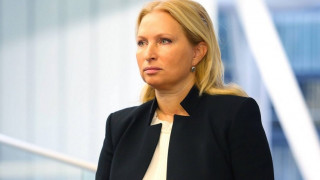Resume:
As a result of the novel coronavirus pandemic-induced crisis, the absolute majority of the world’s countries are experiencing an economic decline. Georgia is not an exception here. According to the International Monetary Fund’s projections, the real economy will contract by 5% in 2020. The region, defined by the IMF which includes Georgia, also encompasses seven other countries – Azerbaijan, Turkmenistan, Armenia, Tajikistan, Uzbekistan, Kazakhstan and Kyrgyzstan. The IMF cut Georgia’s projected 2021 economic growth rate from 5% to 4.3%, although given the projected growth rates of the regional countries and all of the other nations of the European continent, Georgia does indeed hold one of the top positions. In particular, Georgia’s projected average economic growth rate in 2021-2025 is 5.4% which is the third largest economic growth rate after Kyrgyzstan (6.4%) and Uzbekistan (5.5%).
The comparison holds relevant in the case of countries with economies similar to the Georgia ‘s (where Georgia keeps leadership), although the base effect needs to be taken into account when comparing Georgia to developed countries. In particular, a change in a relatively small figure produces a much bigger percentage difference as compared to a change in a higher figure. This creates the false impression that Georgia’s economic dynamic and conjuncture will be better in the aforementioned period as compared to Europe’s developed countries. At the same time, claiming that close to a 5% economic growth is a high level of growth is itself disputable. For a developing country like Georgia, the aforementioned projected growth can be assessed as high.
Analysis
On the occasion of the completion of the IMF Mission’s Seventh Review under the Extended Fund Facility (EFF) arrangement, the Minister of Economy and Sustainable Development of Georgia, Natia Turnava, stated: “According to International Monetary Fund’s projections, in the medium term Georgia will keep and enhance its status as a regional leader in terms of a high economic growth rate – in the upcoming years Georgia’s economic growth rate will be 5.3% which is going to be one of the highest not only in the region but in Europe as well.”
The internationally recognised indicator to assess the economic situation and a country’s well-being is the gross domestic product (GDP). The GDP is the market value of all of the final goods and services produced within a country. As a result of the novel coronavirus pandemic-induced crisis, the absolute majority of the world’s countries are experiencing an economic decline and Georgia is not an exception. In accordance with the IMF’s projections, Georgia’s real economy will contract by 5% [1] in 2020.
The region, defined by the IMF which includes Georgia, also encompasses seven other countries – Azerbaijan, Turkmenistan, Armenia, Tajikistan, Uzbekistan, Kazakhstan and Kyrgyzstan. The IMF cut Georgia’s projected 2021 economic growth rate from 5% to 4.3%, although given the projected growth rates of the regional countries and all of the other nations of the European continent, Georgia does indeed hold one of the top positions. In particular, Georgia’s projected average economic growth rate in 2021-2025 is 5.4% which is third largest economic growth rate after Kyrgyzstan (6.4%) and Uzbekistan (5.5%). The 5.3% economic growth rate, named by the Minister of Economy and Sustainable Development, is in line with the 2021-2023 projected economic growth which makes Georgia fourth after Kyrgyzstan, Uzbekistan and Albania. The picture remains the same in the case of each separate year in 2021-2025 whilst according to the projected economic growth rate in 2023 and 2024, Georgia would rank number one both in the region and in Europe.
The statement of the Minister of Economy and Sustainable Development is accurate vis-à-vis Georgia’s neighbour countries where Georgia is an unquestionable leader. In particular, the average economic growth rate in 2020-2021 is projected to be 3.6% in Georgia, 3% in Armenia, 2.4% in Turkey, 1.2% in Russia and 0.8% in Azerbaijan.
Table 1: IMF Economic Growth Projections for Georgia and Neighbouring Countries in 2020-2025

Source: International Monetary Fund’s Database, October 2020
Although the statement of the Minister of Economy and Sustainable Development holds relevance whilst comparing Georgia to those countries with similar economies, the base effect needs to be taken into account when comparing Georgia to developed countries. In particular, a change in a relatively small figure produces a much bigger percentage difference as compared to a change in a higher figure. For instance, if the income of citizen A was GEL 100 in 2020 and in 2021 his income increased to GEL 190 whilst the income of citizen B was GEL 1,000 and increased to GEL 1,800 in terms of percentage, citizen A’s income increased by 90% and citizen B’s income by 80%. If we ask whose year was more successful, there is no straightforward answer since A’s financial resource did in fact increase more rapidly whilst B’s budget gained a larger sum. The situation is similar between the countries, too, when even a low percentage of economic growth in wealthy countries translates into a very large figure. In addition, given the effect of the diminishing marginal return, developing countries have a significant prospect of growth due to untapped economic potential and their economic growth rates are usually relatively higher. Therefore, to compare a certain country’s economic growth rate with those of the other countries, it would be appropriate to make a comparison with the group of countries having more or less similar economic characteristics.
[1] Real GDP where effect of a price increase in the economic growth is excluded.








